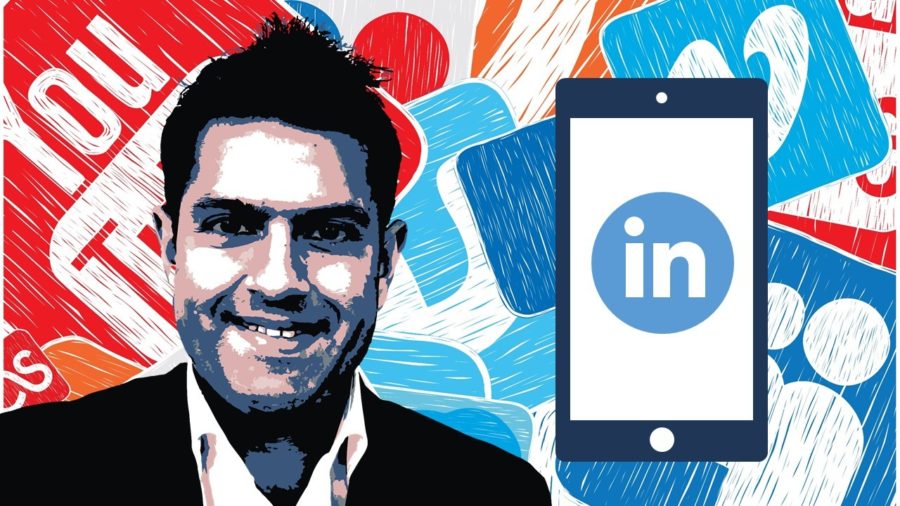5 unconventional tips for LinkedIn content
A lack of likes, comments, or even negative comments are actually really useful. They give you a benchmark to beat. So, you need to suck in your pride and take the punishment. Here are 5 tips I can offer on making content for LinkedIn.
I hated social media.
It was making the world stupider. Kids no longer concentrated at school and now communicated in single syllables. So, I buried myself in books and shunned all things digital.
I realise now how wrong I was.
The problem was me. I wasn’t happy.
I was an investment writer and I had no idea if I was adding value.
Sure, the portfolio managers loved what I wrote and so did the senior managers. But I never got to hear from the people that mattered – our investors.
These were the people I was supposed to be writing for.
So, I started to write on LinkedIn in my spare time.
That was three years ago.
Since then, I’ve discovered a lot. I found out that I wasn’t that good at writing. Basically, what I wrote was a bit boring. My ego took a good bashing, but this helped me a lot.
I created tonnes of content. I experimented with some crazy ideas. I got completely out of my comfort zone and put my reputation at stake.
Nowadays, I tell stories. I produce info-graphics. I’ve even had a go at making vlogs and short films. And, I have a decent track record of doing it.
What I learnt was that you shouldn’t trust conventional wisdom. You should also ignore the same recycled rubbish advice spread across the internet about LinkedIn.
Here are five honest, yet unconventional thing I discovered.
1. Good content can out gun even the biggest sales teams
Imagine this. You post a video on Monday morning and by Tuesday you have 30,000 views. Each view means that someone has watched your video for at least three seconds. Three seconds is all it takes to grab someone’s attention. If you succeed, your content has worked.
It also means that in 24 hours you’ve managed to have a conversation with 30,000 people and get your message across. Even the largest sales teams in the world can’t do this. This is why content is incredibly powerful in the digital age.
2. It’s all about data and not personal feedback
This is hard because we’re taught that asking for feedback is good. The problem is that it doesn’t work. You need a decent sample size to draw good conclusions and you aren’t going to get that from anything less than a couple of hundred people.
Social media, however, will give you the harsh feedback you need. The best thing about this feedback is that it’s honest. People behave differently on the internet. They don’t give you the polite answer. They give you the honest one from the safety of their computer screens.
3. Long formats can sometimes yield better results
Lots of people have said my articles and videos are too long, yet the data tells a different story. What I’ve seen is that you need to make the first few seconds count. If you do, people will invest the time to consume your content. It’s as simple as that.
There’s also this myth that concentration spans are shrinking. Again, this is not true. If it were, then great publications like the ‘New Yorker’ would go out of business.
The English language and the written word are also not dying. People are actually reading more than ever thanks to the internet. Personally, I binge on Wikipedia.
The truth is that if the content is good, people will consume it regardless of length. The problem is that the competition is tougher in the digital age because the content is just so much better than it was in the past. Therefore, there is absolutely no room for mediocre dribble or boring corporate video interviews. You just need to up your game and deliver.
4. Ideas and theories that don’t work
You don’t need to time your posts. The LinkedIn algorithm is designed to distribute good content at the right time. I’ve posted on Sunday and achieved viral success on Monday on several occasions. The truth is that the LinkedIn algorithm is not meant to hinder you – it’s meant to help you, especially if your content is good. So, don’t get any silly ideas about beating the LinkedIn algorithm.
Another problem is that beautiful theories don’t always work. For instance, there is a great book by Simon Sinek called ‘Start with Why’. Marketing people swear by it. The problem is that it doesn’t work. Well, it does if you tweak the model. But, you will only figure this out through trial and error.
5. Going viral isn’t that useful
If you fail to make your content emotionally relevant during the first few seconds of viewing, then it has failed. Storytelling works wonders here because people are genetically designed to accept stories at face value.
It sounds obvious, but it’s true. This works even for bad content, which is why there is so much junk content on LinkedIn. In fact, if you do this you will eventually end up with a viral post. All you need to do is make some junk content about the goodness of mankind and attached an inspiring YouTube video to it.
There is, however, no commercial payoff for you. You will also attract the wrong types of people to your network who binge on this stuff. It took me a while to learn this, but make sure all your content has a clear objective.
Mine is to attract new clients and get freelance work. All my content is targeted as certain people, including this piece.
A lack of likes, comments, or even negative comments are actually really useful. They give you a benchmark to beat. So, you need to suck in your pride and take the punishment. Here are 5 tips I can offer on making content for LinkedIn.











